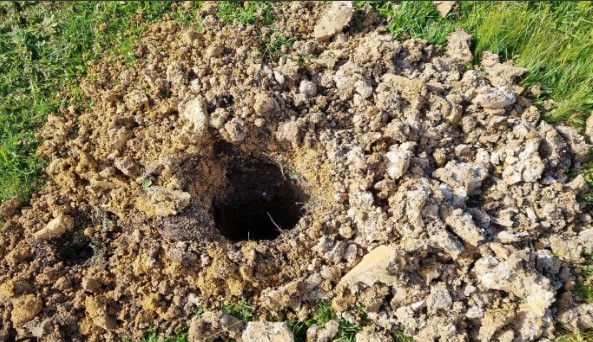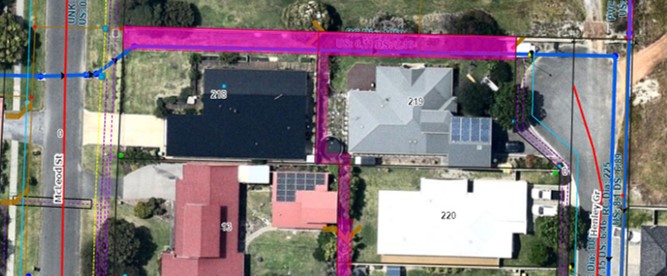
Stormwater and Drainage
On this page
Stormwater
Stormwater is standing or flowing water produced after a heavy rainfall or storm. This water flows over ground surfaces, runs off any material and can pool, causing flooding.
When land is developed the structure of the land is changed and a portion of the soil and vegetation is replaced with impervious areas including roads, carparks, paving, buildings, hard sealed driveways etc. The increase of built up areas results in less rainfall infiltration into the soil and ultimately groundwater aquifers, it also increases the volume and speed of stormwater runoff.
The City is responsible for managing the local drainage network, which includes constructing local road drainage systems, maintenance of drainage infrastructure and assessing land development proposals for stormwater management. Development proposals are assessed using the City's Subdivision & Development Guidelines.
For more information on subdivision - please visit the Subdivision & Development web page.
Managing Stormwater
Site conditions
The City of Albany has a wide variety of soil conditions and terrain, including:
- Clays
- cemented lateritic gravels (ironstone)
- fine silty sands
- gravels
- granite
The types of soils and site conditions will affect the type of stormwater management required for a particular area. Sites can vary significantly and even when sand is encountered it is often not especially deep.

Managing stormwater in existing built lots
The City of Albany receives many enquiries from the community regarding stormwater disposal, where the responsibility lies if stormwater is entering their property, and what to do if they have a problem.

There are typically three main issues:
- Stormwater from one property collecting and then being dispersed onto a neighbouring property
- Stormwater flowing naturally across a lot and into adjacent properties; and
- Stormwater entering the property from the Local Authority's infrastructure, such as roads or drains.
For more information see Managing Your Stormwater
Managing stormwater for a new development
When creating any impervious area, stormwater management for that lot needs to be considered.
For residential builds a stormwater plan needs to be included when submitting a building application. For lots with impervious soils stormwater detention is required.
Stormwater management methods can include:
- soakwells* or drainage pits
- leach drains*
- rainwater tanks
these methods are to be discharged into to City's system where available.
*Infiltration methods will require a soil analysis report to ensure they are suitable for the soil type on the lot.
For further information see Stormwater Detention on your Property
Commercial or industrial developments are required to provide a stormwater drainage system, plans are to be submitted with the planning application.
For information on subdivision stormwater management - please visit the Subdivision & Development web page.
Stormwater issues - Report It
The website's Report It form is the easiest way to report anything to the City, including drainage issues.
Select a location on the interactive map and attach photos from your phone. The report will be directed to the correct department.
Stormwater Network Mapping
Drainage Easements
Drainage easements provide a designated portion of land for drainage infrastructure, and gives the beneficiary (generally the City of Albany or a neighbouring property) rights to maintain and install infrastructure within. Easements generally require the burdened property owner to give up certain rights, such as building permanent structures within the easement to allow for proper function of the system and unimpeded maintenance access.
Easements and utilities are almost always located close to lot boundaries and within building setbacks where development of a building or ancillary structure is already restricted or limited under urban planning codes and regulations.

See the following information sheet for:
- Negotiating private easements
- Restrictions regarding drainage easements, and
- Permitted structures.
Drainage Easement Information Sheet
Connecting to the network
A permit from the City is required for connections to the City’s stormwater drainage infrastructure. Please include a plan of the proposed connection with the applications form.
Important things to note about connecting:
- The connection is to be inspected by a City of Albany Officer prior to backfilling
- Dial before you dig must be completed prior to construction
- A connection permit is only valid for a period of three (3) months from date of issue
Water Sensitive Urban Design (WSUD)

What is Water Sensitive Urban Design (WSUD)?
Water Sensitive Urban Design (WSUD) is a set of principles that can be applied to sustainably manage water, providing opportunities for the development industry, local government and their communities to achieve more liveable cities with vibrant and healthy waterways. Water by Design